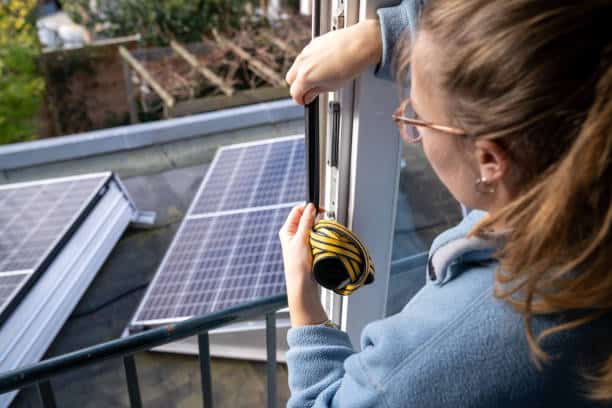Have you ever found yourself frustrated with a malfunctioning toaster or a stubborn blender that refuses to start?
Small appliances are essential tools in our daily lives, but when they break down, the inconvenience can be overwhelming.
However, fear not! In this comprehensive guide on how to repair small appliances, we will equip you with the knowledge and expertise to troubleshoot and fix these common household devices.
Whether it’s a coffee maker on the fritz or a microwave that’s lost its power, mastering the art of appliance repair is not only cost-effective but also empowers you to take control of your home maintenance.
Read on to get full tips and guidelines on How to repair small appliances. Carefully read through.
Table of contents
What are Small Appliances?
Small appliances are portable or semi-portable machines that are used for a variety of household tasks. They are typically smaller and lighter than major appliances, such as refrigerators and washing machines, and can be easily moved and stored. Small appliances are typically used on tabletops, countertops, or other platforms.
Types of Small Appliances
There are many different types of small appliances, but some of the most common include:
- Beverage-making appliances: These appliances are used to make hot or cold beverages, such as coffee, tea, and smoothies. Examples include coffee makers, espresso machines, tea kettles, and blenders.
- Cleaning appliances: These appliances are used to clean surfaces and clothes. Examples include vacuum cleaners, brooms, mops, and carpet cleaners.
- Cooking appliances: These appliances are used to cook food. Examples include microwaves, ovens, toasters, slow cookers, rice cookers, and air fryers.
- Personal care appliances: These appliances are used to care for your appearance. Examples include hair dryers, electric shavers, and toothbrushes.
- Other small appliances: This category includes a wide variety of appliances, such as ice makers, fans, humidifiers, and dehumidifiers.
Read Also: Three-Way Lights – How Three-Way Switches Work
Benefits of Small Appliances
Small appliances offer several benefits, including:
- Convenience: Small appliances can make your life easier by automating tasks that you would otherwise have to do manually. For example, a dishwasher can wash your dishes for you, and a slow cooker can cook your food while you are at work.
- Versatility: Many small appliances can be used for a variety of tasks. For example, a blender can be used to make smoothies, soups, and sauces.
- Affordability: Small appliances are typically less expensive than major appliances. This makes them a more affordable option for many people.
- Portability: Small appliances are typically small and lightweight, so they can be easily moved and stored. This makes them a good option for people who live in small spaces or who frequently move.
Tools and materials needed for repair
The specific tools and materials needed for small appliance repair will vary depending on the appliance and the problem you are trying to fix. However, there are some general tools that you will find helpful for most repairs.
Essential Tools:
- Screwdrivers: A set of screwdrivers with Phillips, flathead, and Torx bits is essential for most appliance repairs.
- Nut drivers: Nut drivers are used to tighten and loosen nuts and bolts. A set of nut drivers in ¼-inch, ⅜-inch, and ½-inch sizes is a good starting point.
- Pliers: Pliers are used for a variety of tasks, such as gripping wires, pulling parts, and cutting wires. A set of needle-nose pliers, diagonal cutters, and slip-joint pliers is a good all-around set.
- Putty knife: A putty knife is used for prying open appliance panels and scraping away debris.
- Flashlight: A flashlight is essential for illuminating dark areas inside appliances.
- Multimeter: A multimeter is an electrical testing tool that can be used to measure voltage, current, and resistance. This is useful for diagnosing electrical problems.
- Cordless drill: A cordless drill helps drill holes and drive screws.
Additional Materials:
- Replacement parts: Depending on the appliance and the problem, you may need to replace faulty parts. Replacement parts can be found online or at appliance parts stores.
- Electrical tape: Electrical tape is used to insulate wires and protect them from damage.
- Wire nuts: Wire nuts are used to connect two or more wires.
- Soldering iron: A soldering iron is used to solder wires together. This is a more advanced repair technique.
Read Also: How To Get Gum From Shoes
Tips on How to Repair Small Appliances
Small appliances are a vital part of any household, and they can be expensive to replace when they break down.
However, many small appliance repairs can be done at home with a little knowledge and tools. Here are full tips and guidelines on how to repair small appliances, so you can save money and keep your appliances running smoothly:
Gather the necessary tools and materials.
Before you start any repair, it is important to gather the necessary tools and materials. This may include screwdrivers, pliers, a multimeter, and replacement parts. You can usually find these tools and materials at a hardware store or online.
Start by troubleshooting the problem.
Before you start taking apart your appliance, it is important to try to troubleshoot the problem. This will help you to narrow down the cause of the problem and make the repair process more efficient. Some common troubleshooting tips include:
- Check the power cord to make sure it is securely plugged in.
- Check the fuses or breakers to make sure they have not tripped.
- Cleaning the appliance to remove any dirt or debris that may be causing the problem.
Disassemble the appliance.
Once you have diagnosed the problem, you will need to disassemble the appliance to access the parts that need to be repaired.
This may involve removing screws, panels, and other components. Be careful not to damage any of the parts during disassembly.
Repair or replace the faulty parts.
Once you have access to the faulty parts, you can either repair them or replace them. If you are not comfortable repairing a part, it is usually best to replace it with a new one. You can find replacement parts online or at appliance parts stores.
Reassemble the appliance.
Once you have repaired or replaced the faulty parts, you will need to reassemble the appliance.
Be sure to tighten all screws and bolts, and make sure that all panels and components are properly aligned.
Test the appliance.
Once the appliance is reassembled, you will need to test it to make sure that it is working properly.
Plug it in and run it through a cycle. If the appliance is still not working properly, you may need to take it to a professional repair shop.
Preventative maintenance
In addition to repairing small appliances, it is also important to perform preventative maintenance to keep them running smoothly. This includes cleaning the appliances regularly, checking for loose connections, and replacing worn-out parts.
What are the benefits of repairing your small appliances?
Repairing your small appliances can be a rewarding and cost-effective way to keep your appliances running smoothly. It can also help you learn more about how your appliances work, and it can be a fun and satisfying DIY project.
Here are some of the benefits of repairing your small appliances:
- Save money: Repairing your appliances can save you a lot of money compared to buying new ones. The cost of parts and tools is usually much less than the cost of a new appliance, and you’ll also save on labour costs.
- Reduce waste: When you repair an appliance, you’re keeping it out of the landfill. This helps to reduce waste and conserve resources.
- Extend the life of your appliances: Proper maintenance can help your appliances last longer. By repairing small problems early on, you can prevent them from turning into bigger, more expensive problems down the road.
- Learn new skills: Repairing appliances can be a great way to learn new skills. You’ll learn how to troubleshoot problems, use tools, and follow instructions.
- Be more self-sufficient: Being able to repair your appliances can make you more self-sufficient. You won’t have to rely on others to fix your appliances, and you’ll be able to save money and reduce waste.
Read Also: How to Make Homemade Dog Repellent
What are Common small appliance issues?
Here are some of the most common small appliance issues and how to fix them:
Refrigerator
- Not cooling: This could be due to several factors, including a dirty condenser coil, a faulty thermostat, or a refrigerant leak.
Solution: Clean the condenser coil, replace the thermostat, or have the refrigerator serviced by a professional.
- Water or ice dispenser not working: This could be due to a clogged water line, a faulty water inlet valve, or a problem with the dispenser itself.
Solution: Clean the water line, replace the water inlet valve, or have the dispenser serviced by a professional.
Oven
- Not heating: This could be due to a faulty heating element, a problem with the thermostat, or a wiring issue.
Solution: Replace the heating element, adjust the thermostat, or have the oven serviced by a professional.
- Door not sealing properly: This can cause heat to escape and the oven to not cook properly.
Solution: Replace the door seal.
Dishwasher
- Not washing dishes: This could be due to a clogged filter, a faulty pump, or a problem with the spray arms.
Solution: Clean the filter, replace the pump, or clean the spray arms.
- Not draining: This could be due to a clogged drain or a faulty drain pump.
Solution: Clean the drain or replace the drain pump.
Microwave
- Not heating: This could be due to a faulty magnetron or a problem with the door switch.
Solution: Replace the magnetron or adjust the door switch.
- Turntable not rotating: This could be due to a faulty motor or a problem with the turntable drive coupling.
Solution: Replace the motor or replace the turntable drive coupling.
Washing machine
- Not draining: This could be due to a clogged drain or a faulty drain pump.
Solution: Clean the drain or replace the drain pump.
- Not spinning: This could be due to a faulty belt or a problem with the motor.
Solution: Replace the belt or replace the motor.
- Not filling with water: This could be due to a clogged water inlet valve or a problem with the water supply.
How to Solve it: Clean the water inlet valve or check the water supply.
Read Also: How to Repair an Oven: Tips and Guidelines
Safety Precautions while Repairing Appliances
Here are some important safety precautions to follow while repairing appliances:
1. Disconnect the appliance from the power source: Before you begin any repairs, always make sure to unplug the appliance from the electrical outlet. This will prevent you from getting electrocuted if you accidentally touch a live wire.
2. Discharge capacitors: Some appliances, such as microwaves and televisions, have capacitors that can store a dangerous amount of electrical energy even when the appliance is unplugged. To safely discharge these capacitors, short them out with an insulated screwdriver.
3. Use the right tools for the job: Don’t try to repair an appliance with just any tools you have lying around. Use the right tools for the job to avoid damaging the appliance or injuring yourself.
4. Wear safety gear: Protect your eyes from flying debris by wearing safety glasses. Wear gloves to protect your hands from sharp edges and electrical components. If you are working with a gas appliance, also wear a respirator to protect yourself from harmful fumes.
5. Work in a well-lit area: Good lighting will help you to see what you are doing and avoid making mistakes.
6. Don’t overload circuits: When plugging in an appliance, make sure that the circuit is not overloaded. This could cause a fire or damage to the appliance.
7. Beware of hot surfaces: Some appliances, such as ovens and stoves, can get very hot during operation. Be careful not to touch any hot surfaces to avoid burns.
8. If you have any doubts, call a professional: If you are not sure how to repair an appliance, or if you are not comfortable doing it yourself, it is always best to call a professional.
Read Also: How to Clean Bathtub Jets
FAQs
Some common issues include faulty power cords, broken switches, and clogged filters.
It can be safe if you follow proper safety precautions and have a good understanding of the appliance’s workings.
Check for visible damage, test the power supply, and listen for unusual sounds to pinpoint the issue.
Basic tools such as screwdrivers, pliers, and multimeters are often required for small appliance repairs.
Conclusion
Repairing small appliances can be a rewarding and cost-effective way to keep your appliances running smoothly. Following the tips and guidelines in this blog post, you can learn how to repair common small appliance problems.





